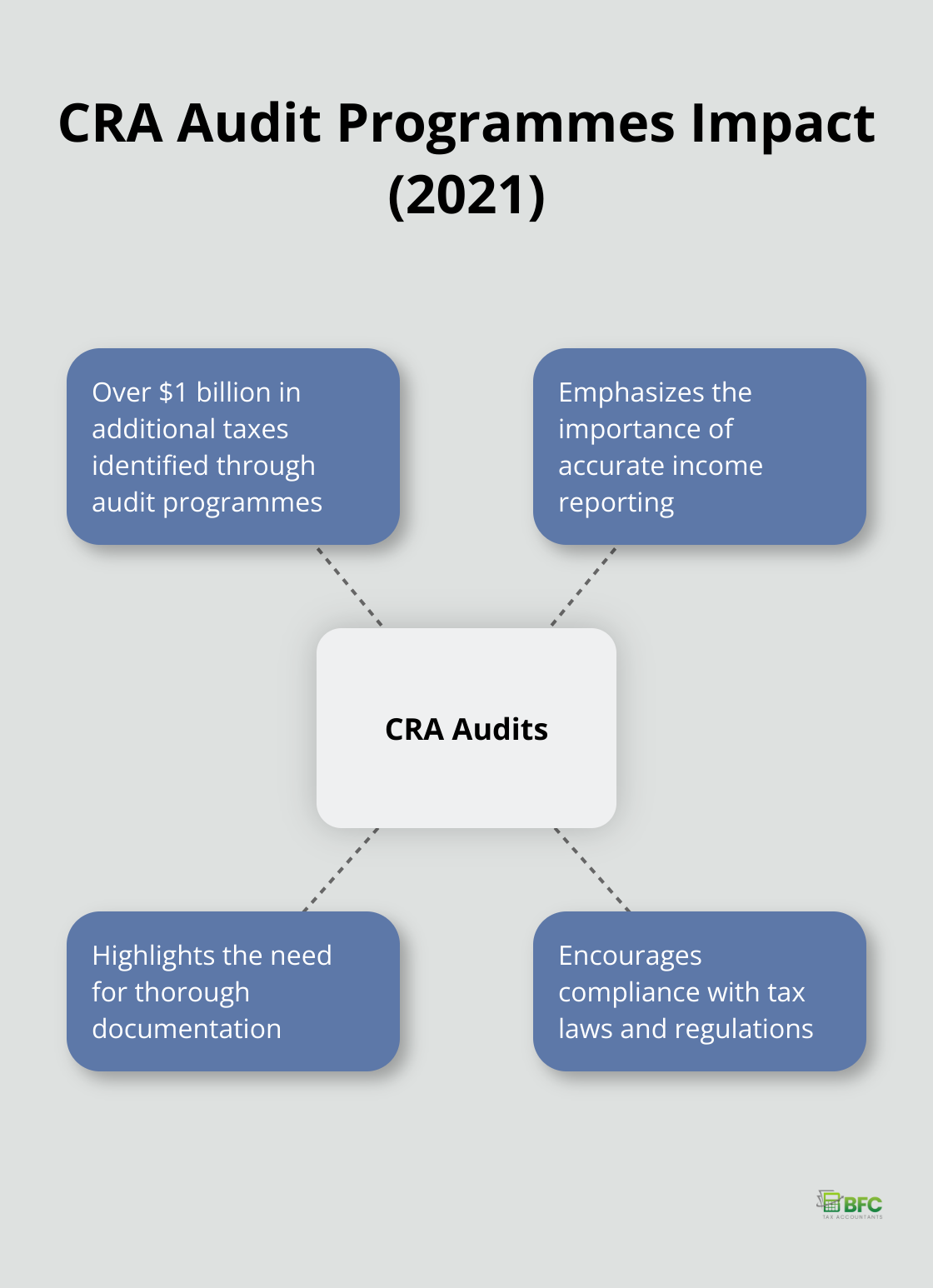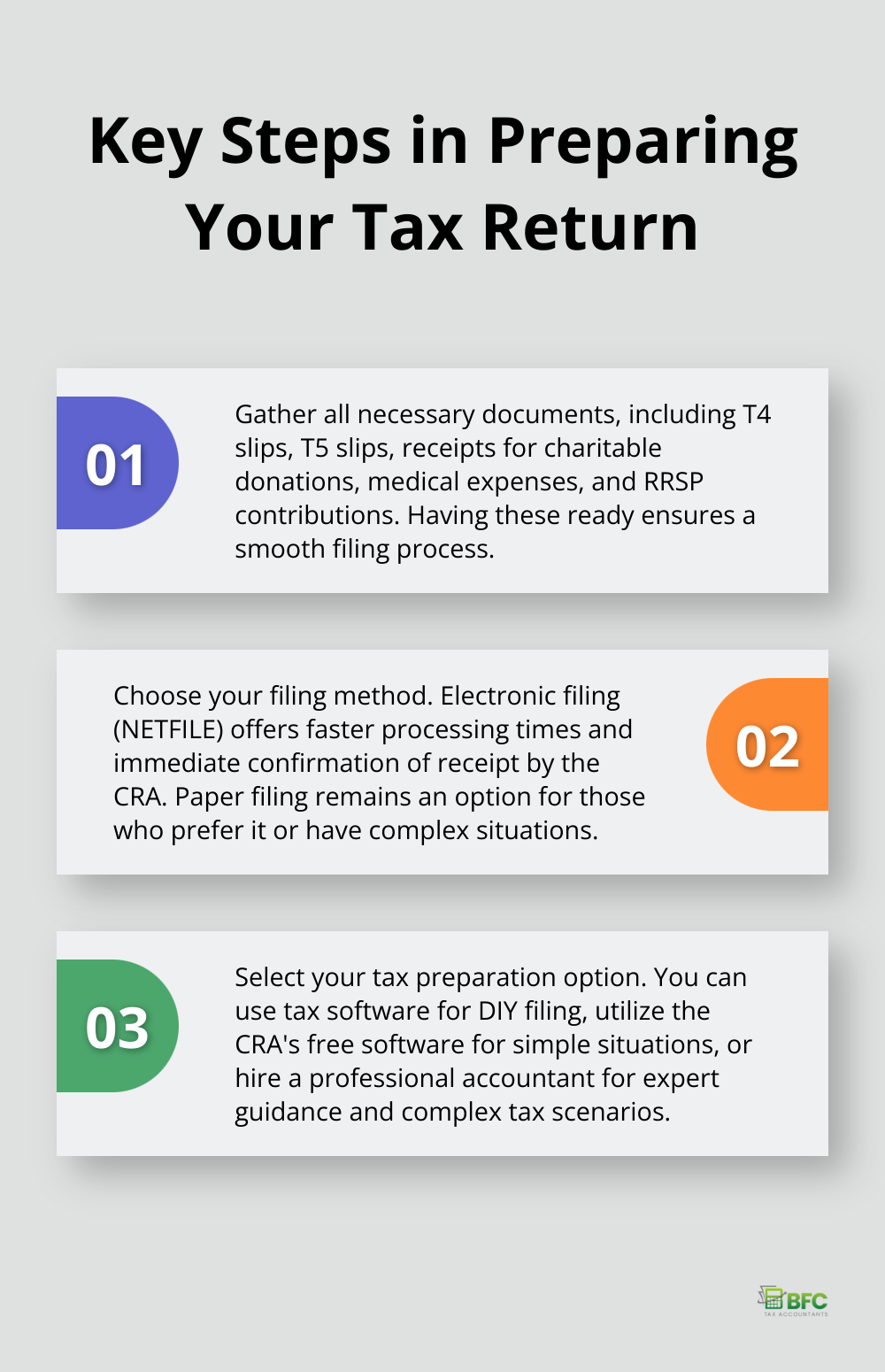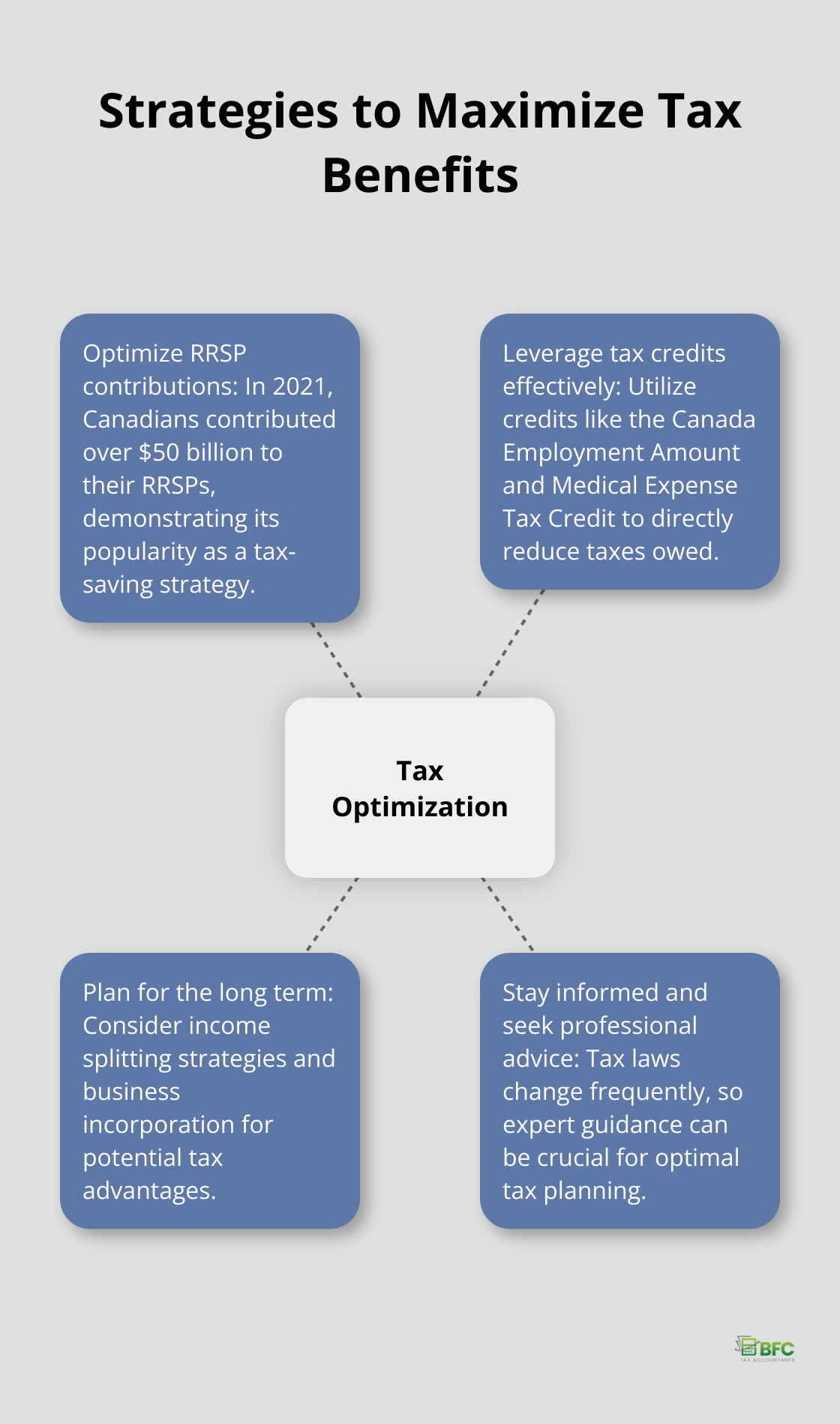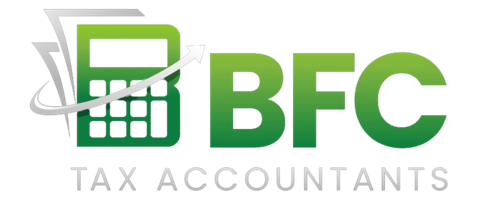Filing a Canadian personal tax return can be a daunting task for many individuals. At BFC Tax Accountants, we understand the complexities and challenges that come with navigating the Canadian tax system.
This comprehensive guide will walk you through the essential steps of preparing and submitting your tax return, helping you maximize your benefits and avoid common pitfalls. Whether you’re a first-time filer or looking to optimize your tax strategy, we’ve got you covered.
How Does the Canadian Tax System Work?
The Canadian tax system impacts every resident and citizen. This complex framework requires careful navigation, which is why we’ll break it down for you.
The Canadian Tax Year
Canada’s tax year runs from January 1 to December 31. Most Canadians must file their tax returns by April 30 of the following year. Self-employed individuals have until June 15 to file, but any taxes owed remain due by April 30.
Statistics Canada reports that in 2022, tax returns were filed and processed up to June 30, 2024. This high number emphasizes the importance of understanding the tax system and filing on time to avoid penalties.
Types of Taxable Income
The Canada Revenue Agency (CRA) taxes various income types:
- Employment income
- Self-employment income
- Investment income (dividends, interest, capital gains)
- Rental income
- Pension income
- Government benefits
Accurate reporting of all income sources is essential. In 2021, the CRA identified over $1 billion in additional taxes owed through its audit programmes, highlighting the need for thorough and accurate reporting.

Deductions and Credits
The Canadian tax system offers numerous deductions and credits to reduce your tax burden:
- RRSP contributions
- Charitable donations
- Medical expenses
- Child care expenses
- Tuition and education amounts
Charitable donations are one of the many deductions available to Canadian taxpayers. This demonstrates the significant impact these deductions can have on reducing taxable income.
Progressive Tax Rates
Canada uses a progressive tax system, where tax rates increase as income rises. For 2023, federal tax rates range from 15% for the lowest bracket to 33% for the highest. Provincial rates (which vary by province) add to these federal rates.
Understanding these rates is vital for effective tax planning. For example, if your income approaches the threshold of a higher tax bracket, increased RRSP contributions could keep you in a lower bracket, potentially saving thousands in taxes.
The Role of Professional Tax Services
Given the complexities of the Canadian tax system, many individuals and businesses turn to professional tax services. These experts (like those at BFC Tax Accountants) stay current with the latest tax laws and regulations, ensuring their clients maximize benefits while remaining compliant.
Professional tax services can provide valuable assistance in navigating the intricacies of the Canadian tax system, from identifying all applicable deductions and credits to strategic tax planning. As we move forward, we’ll explore how to prepare your tax return effectively, whether you choose to do it yourself or seek professional help.
How to Prepare Your Tax Return
Preparing your Canadian tax return requires organization, attention to detail, and a solid understanding of the process. This chapter will guide you through the essential steps to file accurately and on time.
Gathering Your Documents
The first step in preparing your tax return is to collect all necessary documents. These typically include:
- T4 slips from employers
- T5 slips for investment income
- Receipts for charitable donations
- Medical expense receipts
- RRSP contribution slips
- T2202 forms for tuition credits
The Canada Revenue Agency reported data based on 2022 tax year returns filed and processed up to October 1, 2023. This underscores the importance of having all your documents in order before you start.

Choosing Your Filing Method
After you have your documents ready, you need to decide how to file your return. This trend towards digital filing continues to increase steadily.
Electronic filing, or NETFILE, offers several advantages:
- Faster processing times (usually within two weeks)
- Immediate confirmation of receipt by the CRA
- Reduced chance of errors compared to paper filing
Paper filing remains an option for those who prefer it or have more complex tax situations that require additional documentation.
Tax Preparation Options
You have several options when it comes to preparing your tax return:
- Do-it-yourself using tax software: Popular options include TurboTax, UFile, and H&R Block’s software. These programmes guide you through the process and can be a cost-effective solution for straightforward tax situations.
- Use the CRA’s free software: The CRA offers free certified tax software for those with simple tax situations and modest incomes.
- Hire a professional: For complex tax situations or if you’re unsure about the process, hiring a professional accountant can be beneficial. Professional tax services provide expert guidance tailored to your specific needs.
Accuracy is Key
Whichever method you choose, accuracy is paramount. This emphasizes the importance of thorough and correct reporting.
As we move forward, we’ll explore strategies to maximize your tax benefits and reduce your overall tax burden. These techniques can help you keep more money in your pocket while staying compliant with Canadian tax laws.
How to Maximize Your Tax Benefits
Optimize Your RRSP Contributions
One of the most effective ways to reduce your taxable income is through Registered Retirement Savings Plan (RRSP) contributions. The Canada Revenue Agency reports that in 2021, Canadians contributed over $50 billion to their RRSPs. This figure demonstrates the widespread use of this tax-saving strategy.
To maximize your RRSP benefits, contribute up to your annual limit (18% of your previous year’s earned income, up to a maximum of $31,560 for 2024). If you’re in a higher tax bracket now than you expect to be in retirement, RRSP contributions can lead to significant tax savings.

Leverage Tax Credits Effectively
Tax credits directly reduce the amount of tax you owe, making them a powerful tool in your tax-saving arsenal. The Canada Employment Amount provides a non-refundable tax credit for work-related expenses. In 2022, this credit was worth up to $1,287, potentially saving you hundreds of dollars.
Another often-overlooked credit is the Medical Expense Tax Credit. You can claim eligible medical expenses paid in any 12-month period ending in 2024 and not claimed by you or anyone else in 2023.
Plan for the Long Term
Tax planning isn’t just about the current year; it’s about setting yourself up for future success. Consider income splitting strategies if you’re in a higher tax bracket than your spouse. This could involve lending money to your lower-income spouse for investment purposes, potentially shifting some investment income to a lower tax bracket.
For business owners, the incorporation of your business can offer significant tax advantages. The small business tax rate in Canada (ranging from 9% to 15% depending on the province) is substantially lower than personal income tax rates, allowing for greater reinvestment and growth opportunities.
Stay Informed and Seek Professional Advice
Tax laws and regulations change frequently. What worked last year might not be the best strategy this year. It’s important to stay informed and seek professional advice. With the right approach, you can turn tax season from a dreaded chore into an opportunity for financial optimization.
Professional tax services (like those offered by BFC Tax Accountants) can provide valuable assistance in creating comprehensive, long-term tax strategies tailored to your unique situation. Their expertise in both personal and business tax planning ensures you’re not just saving money today, but setting yourself up for financial success in the years to come.
Final Thoughts
Filing your Canadian personal tax return requires careful preparation and understanding of the tax system. You can navigate the process confidently by meticulously organizing your documents and leveraging available deductions and credits. The tax landscape changes frequently, so staying informed about new regulations and opportunities will help you optimize your tax strategy and ensure compliance.
Many Canadians file taxes independently, but the complexities of the tax code often necessitate professional assistance. A qualified tax accountant can provide numerous benefits, including identifying overlooked tax savings opportunities and ensuring accurate, compliant returns. They can also offer valuable advice for long-term tax planning, helping you make informed financial decisions throughout the year.
At BFC Tax Accountants, we offer comprehensive tax services tailored to your unique situation. Our team of experts can guide you through personal and business tax planning, maximizing your benefits while maintaining compliance with Canadian tax laws. Consider the value of professional guidance as you prepare for your next tax season and transform tax filing into an opportunity for financial optimization.

